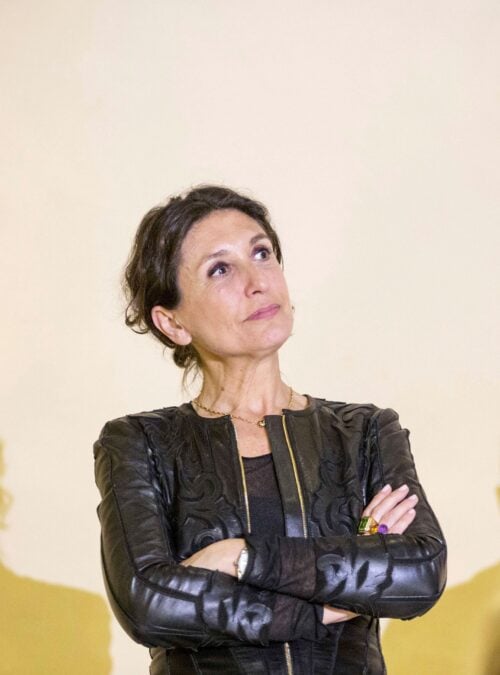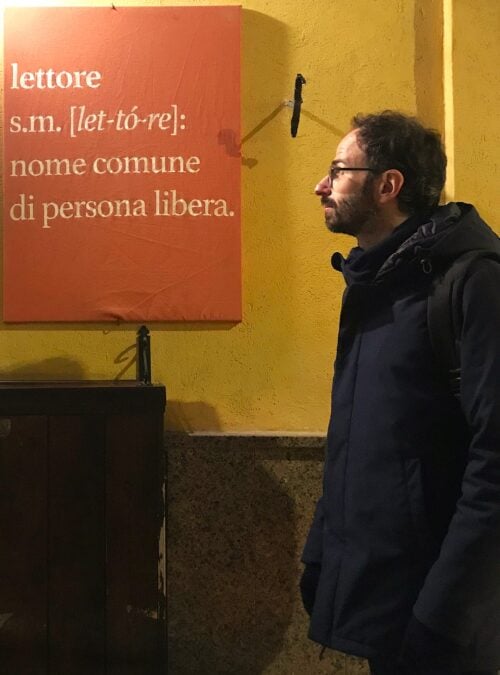Italian, a living language. Interview with Mariarosa Bricchi, historian of the Italian language.
Author: Laura Pugno for the ITALIANA portal

Mariarosa Bricchi teaches Italian Linguistics at the University of Pavia’s Cremona campus. She specialises, above all, in nineteenth- and twentieth-century prose, and the lexicon and grammar between the eighteenth century and the present. She has also written a book on the Italian of translations, La lingua è un’orchestra. Piccola grammatica italiana per traduttori (e scriventi) (il Saggiatore, 2018). She recently edited editions of Curzio Malaparte, Il buonuomo Lenin (Adelphi, 2018), and Carlo Emilio Gadda, Norme per la redazione di un testo radiofonico (Adelphi, 2018). Her most recent book is Manzoni prosatore. Un percorso linguistico (Carocci, 2021).
The States General of the Italian Language in the World, organised by the Ministry of Foreign Affairs and International Cooperation, a few years ago, had as its theme “Italian, a living language”. And a living language is, of course, something that is always changing. But how is Italian changing today, in the year that marks the 700th anniversary of the death of Dante Alighieri, in terms of rules and freedoms with all the input being provided by foreign languages and new speakers of Italian?
Italian, like any other language, is a living organism. It moves forward, evolves and involves, gets itself dirty and becomes enriched. It is constantly subject to change. To mention the most easily recognisable aspect, namely the lexicon, new words and forms are always gaining in popularity. Sometimes these words become fashionable for just a short while and then quickly disappear, while other words can be used perfectly well for decades or even centuries before they begin to fade and disappear from use. This vitality should not make us forget, however, that ours is an ancient language and that the essential Italian – that core of a few thousand words that all of us tend to use when speaking and writing – dates back to the very origins of Italian. In a frequently quoted study, the linguist Tullio De Mauro calculated that when Dante started writing the Divine Comedy, 60% of today’s essential vocabulary was already in use and around 100 years later, at the end of the fourteenth century, this percentage had risen to 90%. If we consider these statistics, there doesn’t seem to be much of a renewal. The situation changes, however, if we shift our attention from this essential vocabulary to more refined lexical items or to specialist scientific and technical terms and words linked to current affairs, to morphology and syntax. In all these areas changes are occurring all the time, without interruption.
In the 1980s, linguists identified a series of characteristic features of what was defined as “neo-standard Italian”. These were often usages that already existed in the past, but had been marginalised and opposed by traditional grammar, before they became acceptable in spoken Italian and non-formal writing. Forty years on, that list of characteristic features needs updating. There is, of course, the growing influence of English, but there are now more and more foreign languages from which we borrow new forms and words. There is also the growing influence of the Italian spoken by people who did not know the language when they arrived in our country. The local versions of Italian, each with its own distinct hues and vitality, encircle and enrich the basic language; driven by the demands of the present, the fields in which words are used change (take the word virus, a Latin term that entered Italian through French and English in the middle of the nineteenth century and was used during the last few decades of the twentieth century mainly with regard to computers, before it has sadly become known to all of us in relation to its medical/scientific meaning). Then there are instances where grammar becomes entwined with new visions of society (not just the hotly debated issue of gender in relation to professions, but also grammatical agreement).
And, to end, there is another interesting fact. As the language has changed, so has the way in which it is described. Today’s grammar is not as prescriptive as it used to be – rather than imposing strict rules, it now tends to explain directions and trends. It no longer takes into account just literary Italian, instead considering the language in all its different forms and varieties, helping us to adapt forms and words to the situation and context. In addition to the rules, it now recognises a space of freedom and creativity, encouraging speakers of Italian to use this space mindfully.
Italy has always been a country in which you can find a lot translated. Today, however, it is Italian books that are enjoying great success in the world with all the translations being carried out in countries such as France and the United States, not just as a result of media influence (think of the “Ferrante effect ”…), but also thanks to the important financial contributions provided by the Italian Ministry of Foreign Affairs and Cepell (the Italian Centre for Books and Reading) in support of the publishing sector. As a scholar, what is your reading of these phenomena? What do they tell us about the influence of Italian literature internationally? What are the trends in play here?
You are right, the attention towards and support for translations from Italian are definitely growing as a result of these financial contributions (of fundamental importance for the publishing sector, but they already existed in other countries decades ago), but also as a result of the dissemination of precise information (the website newitalianbooks and its forerunner, booksinitaly, are excellent examples). In addition to the translation of new works of both fiction and non-fiction, a very important trend for me has been the rediscovery of classic Italian works. This, of course, has an impact not just on reading habits, but also on fields of research and the studies devoted to the Italian language and literature in other countries. I should like to mention just three important examples, which I hope will not remain isolated examples. The first is the English edition, published a few years ago, of the complete works of Primo Levi. This was an almost unprecedented project, involving new translations of some of his works and a systematic revision of existing translations, all carried out as part of one single project, with academic support provided by the International Primo Levi Studies Centre in Turin. The second example are the translations currently being carried out by Penguin in England and Sexto Piso in Spain of a selection of Gadda’s works. Finally, there is the imminent publication of a new English translation of I promessi sposi – a truly groundbreaking event that will hopefully pave the way for a rediscovery of an author, Manzoni, who, while so renowned at home, is very much neglected abroad.
Do translations have an important impact on today’s Italian?
We are all fully aware of the fact that many of the books we read are translations. Our language is, therefore, also the language filtered through the words of translators. Translators are – and must be – very demanding, hyper-specialised and very aware writers. Starting from foreign languages, translators into Italian must create a work and what they ask of Italian is no different from what was listed more than thirty years ago by Italo Calvino: “I believe that prose requires you to invest all your verbal resources: a spark and precision in the choice of words; economy, significance and inventiveness in their distribution; strategy, mobility and tension in a sentence; agility and ductility when moving from one register to another, from one rhythm to another”. The adventure of translation influences our language and when it is done well (and there are numerous examples, nowadays), it makes full use not just of native competence, but also of the tools of grammar, lexicography and Italian literature – a heritage of knowledge that can be used by translators to hone their skills. The opposite is also true, however. Translators can contribute a great deal to the Italian language (and its grammar): knowing it, respecting it, betraying it and, where necessary, pushing its boundaries – which is a sacrosanct right of anyone who uses a language. Above all, they can move around within the language, combining both flair and awareness, using it correctly or breaking its rules, but always in a responsible manner.










